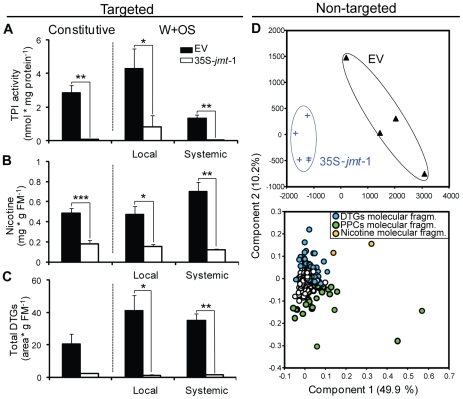Figure 6. Constitutive and W+OS-induced levels of direct defenses are strongly reduced in field-grown 35S-jmt-1 plants.
Mean (± SD, n = 5) (A) trypsin proteinase inhibitor (TPI) activity, (B) diterpene glycosides (DTGs) and (C) nicotine accumulation in rosette leaves from empty-vector (EV) transformed and 35S-jmt-1 plants before (‘Constitutive’) and 3 days after that one fully expanded leaf per plant was W+OS elicited. The untreated orthostichous leaf above the elicited leaf (‘Local’) was analyzed as the systemic leaf (‘Systemic’). (D) Partial least square discriminant analysis obtained after Pareto scaling revealed a clear differentiation of metabolite profiles in the W+OS-elicited leaves of 35S-jmt-1 and EV plants. As revealed by examining the loading plot (lower plot), ions specific for DTGs, nicotine and phenylpropanoid polyamine conjugates (PPCs) accounted for the separation between EV and 35S-jmt-1 profiles. The behavior of individual ions in W+OS-treated plants is summarized in File S1 and Figure S6. Molecular fragments (fragm.) correspond to discrete m/z features produced during the in-source ionization process. Asterisks represent significant differences between EV and 35S-jmt-1 plants (unpaired t-test; * P<0.05; ** P<0.001, *** P<0.0001).

